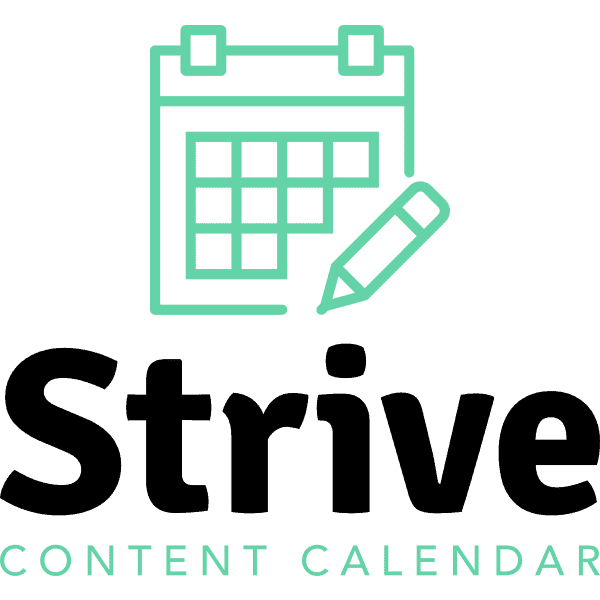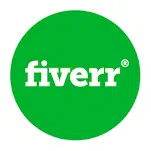40+ Blogging Tools for Beginners in 2022
Finding the right blogging tools for beginners that help you move the needle, faster is hard. For each type of blogging resource, there are a dozen or so options…
…and in the world of many options, you can easily get lost in the never-ending cycle of trying and abandoning blogging software.
As a result, you waste a lot of time, the time that you could be spending creating content and growing your blog.
On this page, I have highlighted some of the best blogging tools that can help you build, design, launch, and run a profitable blog.
Blogging Tools for Beginners
Let’s now explore some of the best and must-have blogging tools for beginners and advanced users for building and running a profitable blogging business:
40+ Popular Blogging Tools and Resources for Every Blogger
Email Marketing Blogging Resources for Beginners
I was good at crafting great long-list and evergreen content for my blog and I was excited working on my next posts.
Needless to say, I was a busy buddy always on the lookout of new ideas for my next blog posts. I invested huge amounts of time and resources in producing more and more content, with less and less readership.
Well, I was rewarded with hundreds of unique visitors daily who never came back, since there was no opt-in on my site. There was no means to let them know that I had produced a very informative 100 list content related to the blog post they had just read on my website.
Email marketing comes with a little cost, but it is worth it if you want to build a loyal; subscriber base.
When crafting out your emails, there are a number of email marketing strategies you do not want to miss.
While there are over 50 email marketing firms existing today, here are three of the most popular, effective and relatively affordable platforms:
1) ConvertKit
This is perhaps one of the best email marketing software for bloggers and authors. It is actually designed for them (or you, if you are a blogger :))
Launched in 2013, ConvertKit has been growing steadily, though it has a small coverage compared to the others which have been in the industry for long. This is actually an advantage, since their staff offer a dedicated support to its users.
With ConvertKit, you enjoy:
- Customizable automated messages
- Mobile friendly emails
- Easy organization of sequenced courses
- High deliverability of your emails
2) Mailerlite
This is another rapidly growing platform that is packed with really cool and exciting features. For instance, Mailerlite recently introduced a feature in their automation section which allows you to set a particular task following a subscriber clicking a certain link
Let’s say James sent an email to his 1000 subscribers which teaches them the importance of crafting great blog post titles, with a link to the entire post. 250 people happen to click on the link.
For James to target his marketing strategies accordingly, he will set a condition that automatically adds all the subscribers who clicked the link to a new list, named, ‘Great Blog Posts’ James will then promote his Great Blog Post course to that list only, and there will be a high conversion rate.
3) Aweber.
This is an email marketing firm that is being used by several bloggers and webmasters. They offer a 30-day trial period and their emails are usually optimized for mobile users.
With nearly 2.32 billion people owning Smartphones as of 2017, it is imperative that you have mobile-friendly templates for your business.
With Aweber, you will get:
- Over 150 email templates to make your email designs hiccup-free
- Integration with other online services which you are most likely to be currently using. Aweber makes it easier to add customers who have purchased from you to a mailing list.
- Aweber labs. With these, you can easily build your own apps and time-saving tools which will make it even easier to optimize your email marketing strategies.
The only disadvantage is that the platform could be a bit hard to navigate if you are a beginner, and its pricing is relatively high; Starting from $29/month for 1000 subscribers. If your list grows, you will definitely have to pay more.
4) Mailchimp.
If you are on a budget and you are looking for a relatively cheap platform to start with, then Mailchimp should be your favorite choice.
With Mailchimp, you are able to automate email campaigns, create and customize your subscription boxes as well as track your subscribers’ activity. Mailchimp does a great job in rating your subscribers based on their activity such as opens, responses, and clicks. You can therefore choose to reward all of your four and five-star subscribers, as well as come up with a way to motivate your one-star subscribers.
With Mailchimp you also enjoy:
- Low-cost plans.
- Built-in templates and editor to customize campaigns.
- Lots of third-party integration.
- Several Help materials to get you started.
The big perk about this platform is that it is free for up to 2000 subscribers and you can send up to 12000 emails without paying a credit card! However, if you are new to the platform, it can really be clunky during the editorial process.
Image Archive and Design Blogging Tools
When it comes to content marketing., an image is worth 1000 words. The world is almost being driven by visuals. To give your posts that pump, you need great images to accompany them. However, getting great images is much of a hustle.
Most professional companies charge more than $20 for a single stock photo, and considering that you are publishing new posts every day, this can be quite costly.
Most of the images you will find online are copyrighted, and do not really showcase your own personal brand.
To stand out, you will need unique specific and non-generic pictorials. There are several free websites where you can outsource completely free high quality images and in this section, we will highlight some of them.
All photos on this platform are released under the creative commons public domain license
- Pexels: All the photos are free for personal and commercial use with no attribution required
- Pixabay. The site contains over 500 000 high quality photos and graphics
- Negative Space. This site makes it easier to grab what you need since it uses a smart filter which allows you to sort the results based on the color, Copyscape position and the category
- Good Free Photos: The site is updated daily and the photos do not require attribution
- Largest collection of hand-picked free stock photos for startups. …
- StockSnap. …This is a home of thousands of beautifully taken photos free from copyrights… The photos cover a variety of niches and you are likely to find what you are looking for
- ISO Republic.
From the list above, you can easily outsource great images for your site. However, you will also need to tweak them a bit to fit your personal brand.
To accomplish this, you need some designing tools including:
12) Canva.com
This one is my favorite and albeit it’s a favorite for most bloggers as well.
Pinterest is becoming a very vital search engine in today’s world, and thousands of people are dashing into it to find great compelling content to read.
If you are not using Pinterest as your source of traffic, you may want to read How Pinterest Can Turn Your Boring Writing Portfolio Into a Lead-Generating Machine
Canva even has Pinterest templates which you can tweak to fit your content and your business brand.
The other cool thing about Canva is their design school where you learn how to use Canva to design different graphics for different purposes. For example, you can learn how to make book covers, Social Media Images, Info graphics, blog headers etc.
Apart from Canva, there are also other design tools that you can consider using. Some of them are free, while others will require a small investment. You may also need to hire a great designer if you are not into graphic designing, though most of these tools are easy to use.
13) Visme
This is another great online tool to design beautiful visuals for your blog posts and pages. Visme is both an online presentation tool and an infographic tool
You can watch it in action on YouTube
Other Designing tools:
- PicMonkey
- Pixlr
- Pictochart
- BeFunky
Social Media Management Blogging Tools
The rule of the thumb is to spend 20% of your time creating content for your blog, 50% promoting content and 30% reading other people’s work.
That’s right!
After penning down killer content, you need to let the world know that this content exists.
If the world fails to know, then your killer content is as good as nonexistent. People need to find you.
One good thing about website traffic is that it refers to people! People are social. To reach them, you need to be social. Engage in various social media platforms, and always ensure that you are offering value.
However, this process requires a lot of dedication and understanding the behavior of your potential readers. When are they awake? When are they asleep? When do they read? and what do they read?
To do well in your Social Media Marketing campaigns, you need great blogging tools and an actionable plan and stick to that. The good thing is that there are several social media tools that can help you stay organized.
Some of the best social media scheduling tools ( blogging tools) include:
18) Publer
This is one of the newest players in the industry, but its success is because of its stunning features.
The Publer platform supports several social media sites such Facebook, Twitter, Pinterest, Instagram, LinkedIn, Chrome extensions, Android apps,etc.
With Publer, you are able to calculate optimal schedule time and adjust your campaigns accordingly. The site also has a powerful analytics dashboard which enables you to monitor how your schedules are performing.
Their free and paid pricing plans also give you the flexibility that you desire. You may upgrade and downgrade at anytime; no long-term engagements.
19) Hootsuite.
This is, in my opinion, the leader in the social media management industry.
Though it is almost similar to Buffer, Hootsuite focuses on general social media management which includes scheduling, engaging and monitoring. while buffer is specifically designed to give more emphasis on the scheduling, ignoring the other functions.
The platform supports several social media networks such as YouTube, Face book, LinkedIn, Twitter, Pinterest, Google+, Instagram, Chrome extensions, Android apps etc.
With Hootsuite, you can schedule posts, post videos, bulk images as well as, recycle old posts.
Other notable features of the platform are team functionality and optimal schedule calculation, which are very vital in your social media marketing strategies.
Other Social Media management blogging tools to consider include:
- Buffer
- SocialOomph
- Jollor
- Every Post
- Sprout Social
- Agora Pulse
Start a Blog That Matters Resources
- Get Your Own Domain Name and Hosting from Bluehost. You need a web host that guarantees 99.9% uptime, technical support, secure servers, and affordable rates. I personally recommend using Bluehost to host your site. With Bluehost, through my affiliate link, you get to save up to 60% for your first year.
- Register Your Domain With Namecheap. The second thing is to have address (domain name) to your home (blog). Choose something simple and that which embodies your brand. For Instance, my domain is www.thepennymatters.com,
- Install WordPress for Free. The next step is to install the blogging platform/software that you will use to post, edit, upload Videos, images and much more. Almost every blog is being run by WordPress. The good thing is that it can be installed with one click once you have bought your hosting from Bluehost
- Lavitin Website Design: Get a fully-functional website within seven days without breaking a bank
SEO Blogging Tools
- Semrush: This is a paid SEO tool that helps you do keyword research and competitive analysis like a pro. It’s an All-in-one Digital Marketing tool that will help you refine your content strategy and find collaboration opportunities
- Google keyword planner shows you related keywords to the main keyword you type in, with other metrics such as search volume, competition, and cost per click
- Rankmath SEO Plugin for WordPress: This is the best SEO plugin with tonnes of features to help you improve your rankings
- Ubersuggest: Enter the main keyword in this tool’s homepage and get hundreds of keyword suggestions. Analyze top-performing content to uncover content ideas
- Longtail Pro tool: This tool does one thing really well: Unravel longtail keywords that are less competitive for your industry
Online Payment Tools
- Payoneer: Receive your payments and withdraw to your local bank account in any country
- PayPal: A popular payment method worldwide
Tools for Graphic Design
- Canva. Design any social media graphic for free either online or via their mobile apps
- PicMonkey. This tool offers more photo editing options that help you create stunning graphics
- Fiverr. Hire experts for literally anything for $5 or more to handle your technical issues such as logo design, website development, content writing, virtual assistance, etc.
Learning Resources: Online Courses and eBooks
- Free Bestseller Book Launch: 7 actionable video lessons to launching your book on Amazon
- Online Business Ideas: Grab 121 online business ideas to give you some inspirations
- LinkedIn Learning. Follow the link to get access to thousands of courses for free for 30 days
- Social Media Manager School: Harness the power of social media to rapidly grow your blog and online business
- Skillshare: Try thousands of online courses for free using my link
- Udemy: Find the course that you need and start taking action
Do you have necessary blogging tools for beginners that you can’t do without? We would love to know some of your favorite blogging tools in the comments section below.














